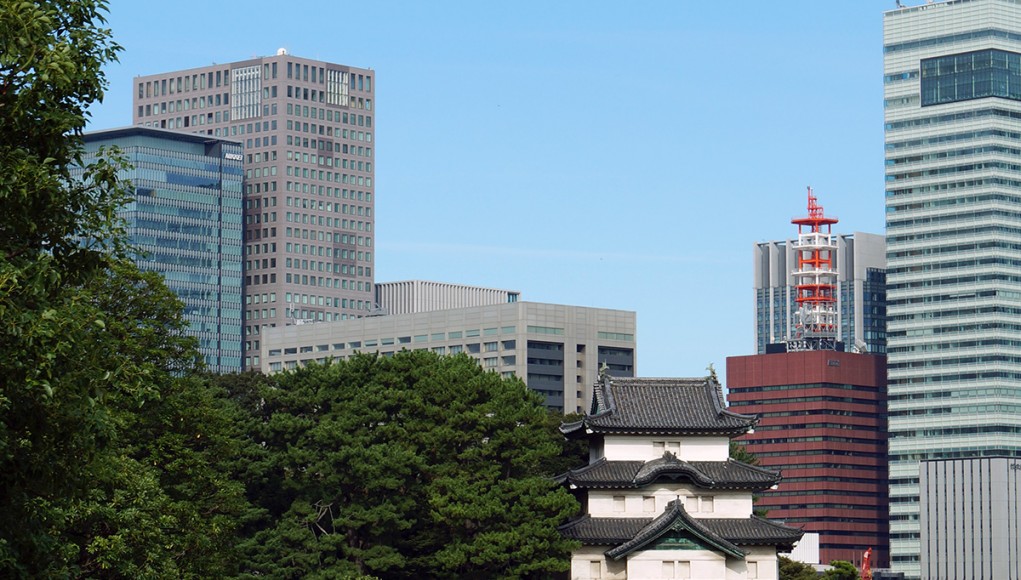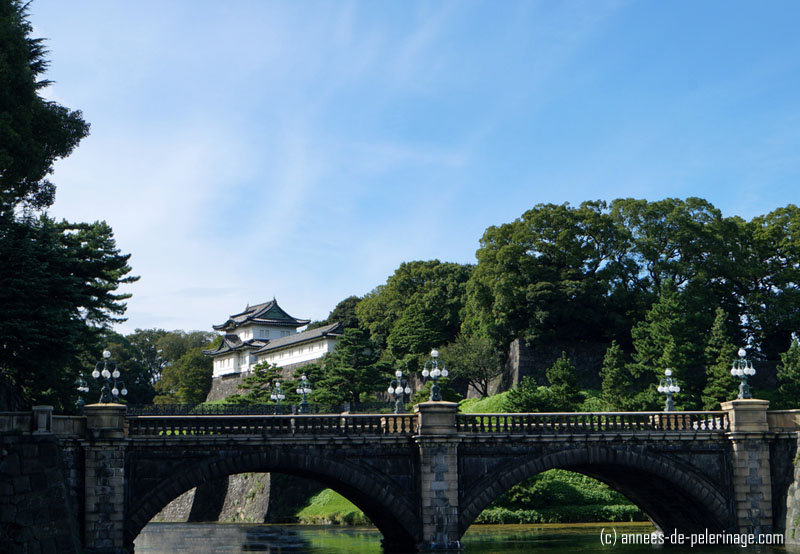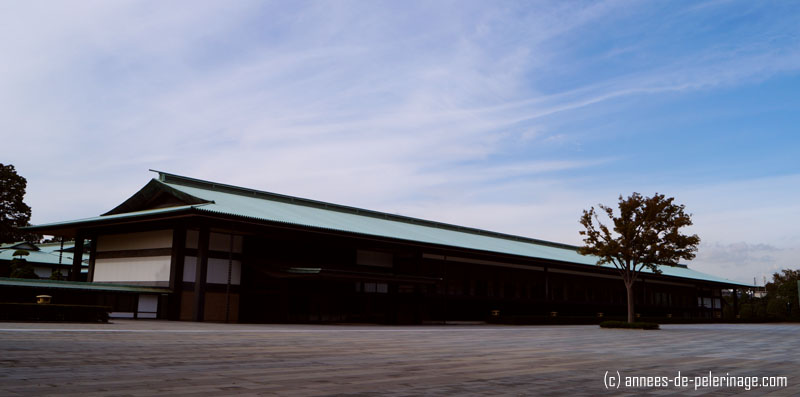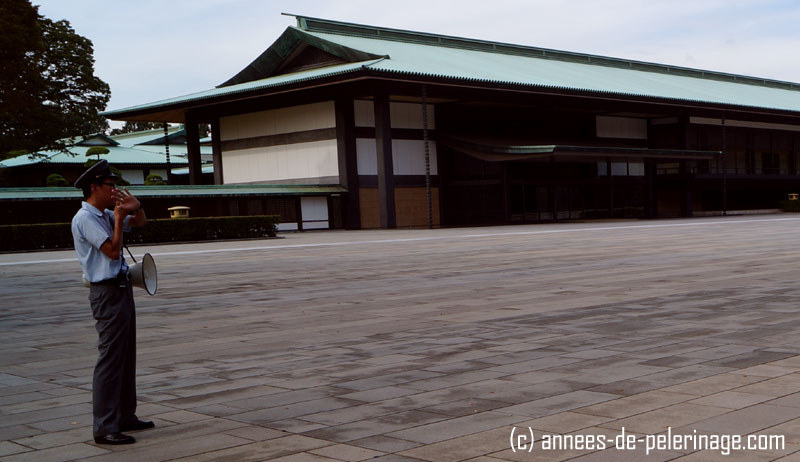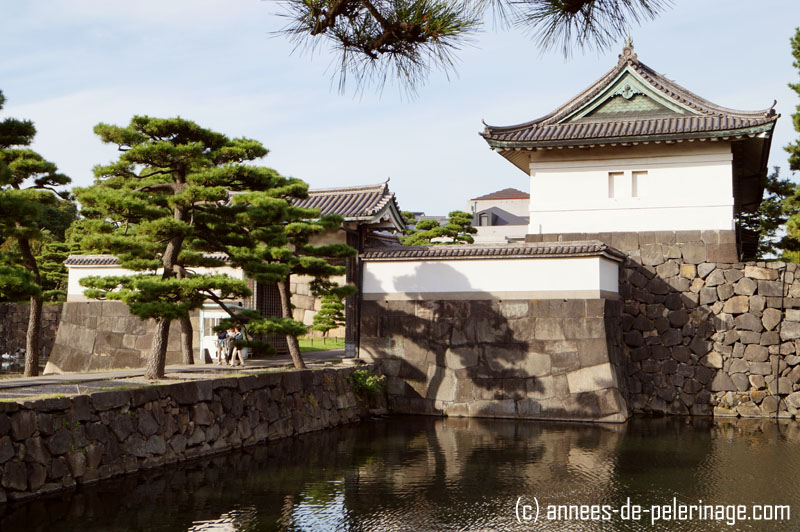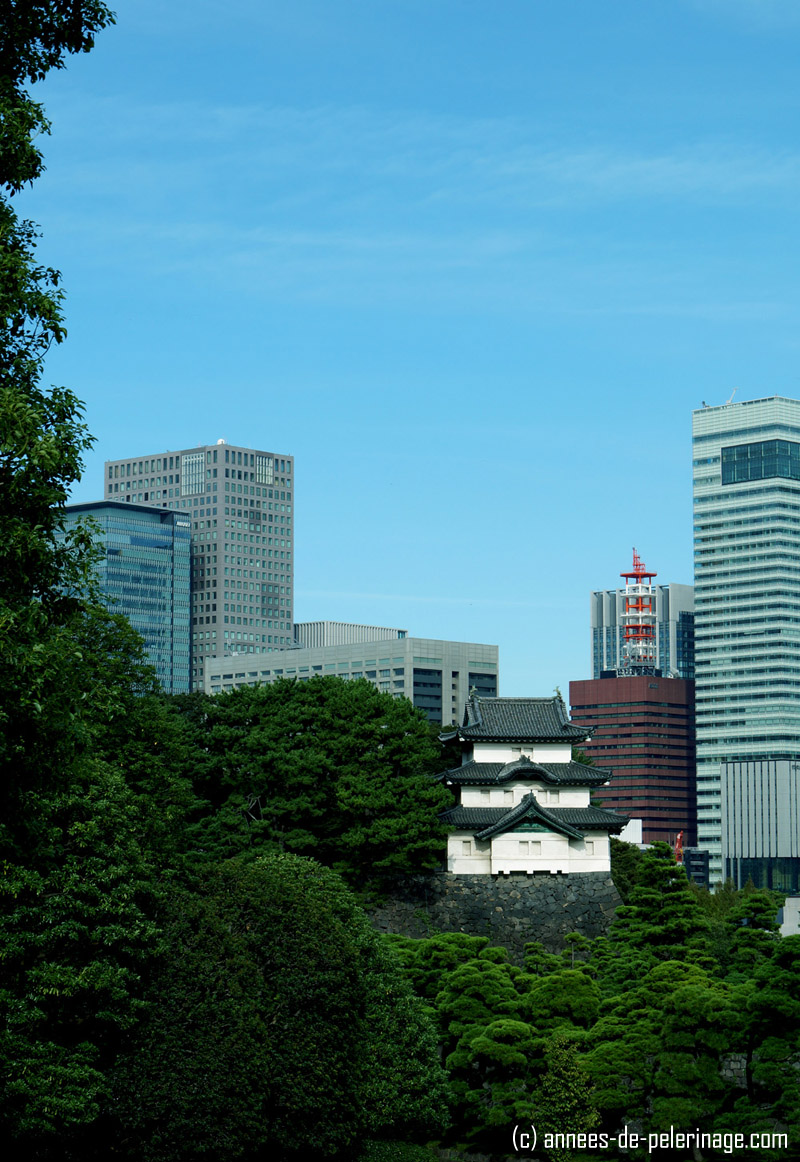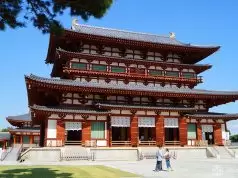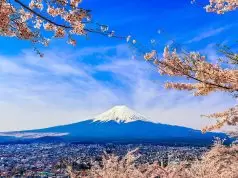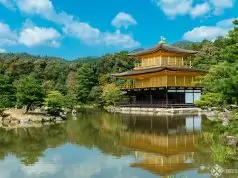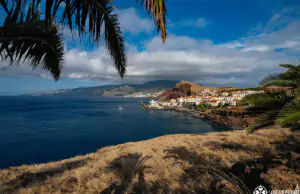The Imperial Palace in Tokyo is the main residence of the Emperor of Japan. Here is what you what can see and where to get tickets.
A quick glance at the map of Tokyo will reveal a huge green spot right in the center of Japan’s capital. What looks like an enormous landscape park is in fact the Imperial Palace. A green oasis such as this in the middle of one of the biggest cities in the world appears to offer a welcome respite from traffic jams and smog.
Most of the palace grounds are off limits for visitors though – and even the rather small part that is accessible will need a special permit and on an offical tour guide. As a dedicated tourist in Tokyo there is no way around visiting the Imperial Palace, where one of the last emperors in this world still resides. It’s certainly one of the 20 best things to do in Tokyo.
______________
Planing a visit to Tokyo? Check out my other articles to have the time of your life:
How to get tickets for Sumo Wrestling in Tokyo
All you need to know about visiting the biggest fish market in the world
Where to buy tickets for the Imperial Palace in Tokyo
First of all: visiting the Tokyo Imperial Palace is free. So there is no need to buy a ticket. You only have to apply for a tour at the Imperial Household Agency (click here for their official website). It will guide you in 6 steps through the application form, where you have to choose your destination (there are other palaces you can visit as well), the date you want to visit and supply your personal details.
Once done, they will review your application and you will receive an e-mail containing further instruction. Please keep in mind that you have to bring along the permit AND your passport (not your id!!!) to be let in at the exact time you applied for.
It is possible to register via phone as well – which would only be an option if you are quite fluent in Japanese. The online registration form for visiting the Imperial Palace Tokyo is quite easy to fill out – so don’t worry.
That being said, it’s important to apply early so you can work the rest of your Japan itinerary (click to check out mine) around it.
When to visit the Imperial Palace Tokyo
The bad news ahead: The palace grounds are off limits for tourists on Saturdays and Sundays and on national holidays (the opening hours are supplied during the application process as well). Visiting on Friday might also be a bad idea, since the East Gardens are closed then. They are, however, not that spectacular, so you shouldn’t worry all too much if you miss them. The rich flowers of the gardens make for a nice bonus, though, and are open for the public without an application.
A very auspicious day to visit the Imperial Palace would be the January the 2nd. The whole Imperial Family makes a public appearance on this auspicious date directly after New Year on the porch of the Chowaden Reception Hall (seen above). This will be the only day in the year when the Imperial Palace is open to the public. Expect the palace to be very crowded, though, and expect to wait a long time in the cold.
You could also visit the Imperial Palace on the Emperor’s birthday on December 23rd. The grounds will be open to the public on that day as well and there will be a little ritual performed for the crows in the morning and in early afternoon.
Other than that it really makes no difference when to go. There will be a tour in the morning and one around noon. Pick the one that suits your travel plans best. Morning will probably be better since the other tour starts at 1:30 pm and that leaves not a lot of time for doing other activities in the morning. After all you have to calculate in some time for getting there. If you do want to go on the 13:30 tour you could, however, go to the world famous Tsukiji Fish Market in the morning (Read my travel guide here). I did that, in worked out quite fine!
Last note: The online application for tickets to the Imperial Palace Tokyo is only possible two months in advance. Especially during the tourist seasons in April, May, September and October you might want to check in early on, since the best dates and tours will be quickly sold out. Every guided tour only allows for roughly hundred visitors.
What to see in the Tokyo Imperial Palace
Now keep in mind that you will be guided through the palace grounds on a tight schedule. It is not permitted to leave the group and go exploring on your own. That being said you really don’t have to worry about missing any highlights. As a foreign tourist you will be supplied with an electronic tour guide.
The most impressive sights will be the few old structures remaining from the Edo era 200 years past. They and the gardens make for an impressive contrast to the skyscrapers in the background of the Chiyoda ward. Expect to see a lot of rather modern concrete buildings as well. While not outright ugly they somewhat lack the imperial grandeur you might be expecting.
How to prepare for the tour through the Imperial Palace in Tokyo
You have to bring a print of your official permit and your passport. Other than that, make sure to check a map of the Imperial Palace Tokyo before. The official admission for tourist is not through the main entrance but through Kikyomon Gate (seen above). It is quite a long walk from the closest subway station.
Your best option would be getting out at Nijubashi-mae or at Otemachi Station (here is the official access guide from the imperial household agency). Both will probably take 10 to 15 minutes depending on traffic and how fast you walk. Don’t come late since they won’t let any latecomers in.
Also make sure to leave big bags at your hotel. Those are not permitted on the grounds of the Imperial Palace Tokyo. There will be lockers at the entrance though where you can deposit extra luggage.
And last but not least – there are really no public toilets on your guided tour. So make sure to take the opportunity at the bathroom inside the waiting hall.
What to expect of visiting the Imperial Palace in Tokyo
To be quite frank the palace grounds are probably worth a visit but not as impressive as other monuments you can see in old imperials capitals Kyoto or Nara. While in those two a lot of ancient architecture has survived the last 2.000 years, the Imperial Palaces in Tokyo has been ravaged by fires repeatedly.
So you will see a lot of gigantic foundations and huge moats, but little that reminds you of Japan’s past and the old castle of the shoguns. If you are on a tight schedule – especially if you are going to Kyoto or Nara later on – you might actually want to skip visiting the Imperial Place in Tokyo. In Tokyo itself it is one of the only places to get in contact with Japans cultural heritage though.
Special treat: Jogging route around the Imperial Palace
There is, however, one exception to our advice. If you are a jogger then you should not miss the Imperial Palace! There is a kilometer long jogging track leading all around the entire complex. This makes for quite the impressive background and a truly unique experience.
If your hotel is located in Marunouchi (like the Four Seasons or the Aman Tokyo close to the central station) then the Imperial Palace is just a few minutes away. Despite being in the very center of Tokyo the whole Chiyoda Ward is not particularly active – especially in the morning. So do not be worried about severe traffic or anything. Remember to jog on the left side and run counterclockwise! No tickets or permits are needed!
I hope you enjoyed my little guide to visiting the Imperial Palace in Tokyo. If you have any questions, please feel free to ask them in the comment section below.
Looking for the rest of imperial Tokyo? Check out my guide on Meiji Shrine – a Shrine that receives 3 Million visitors on New Year’s day alone.


